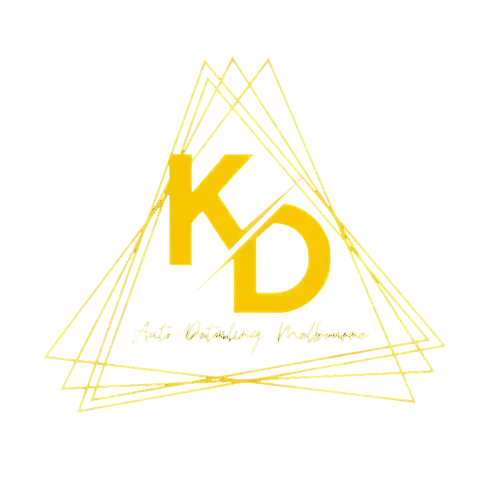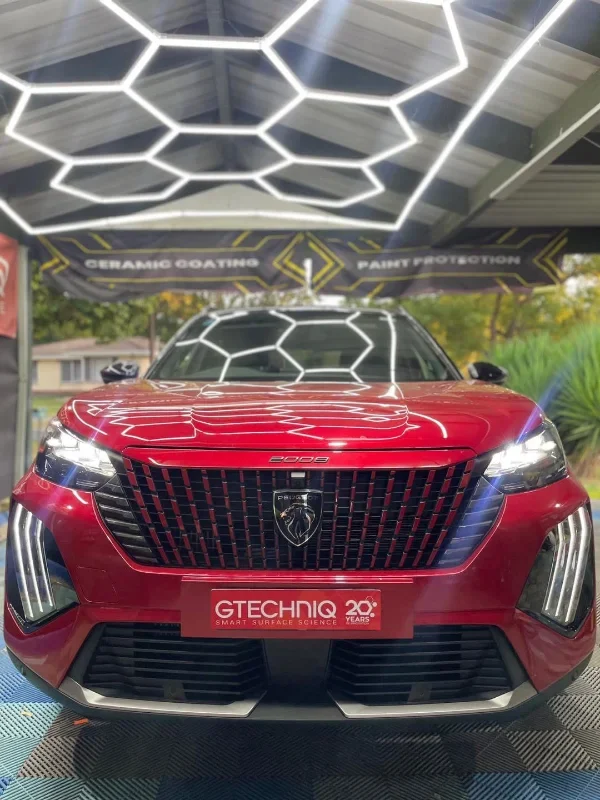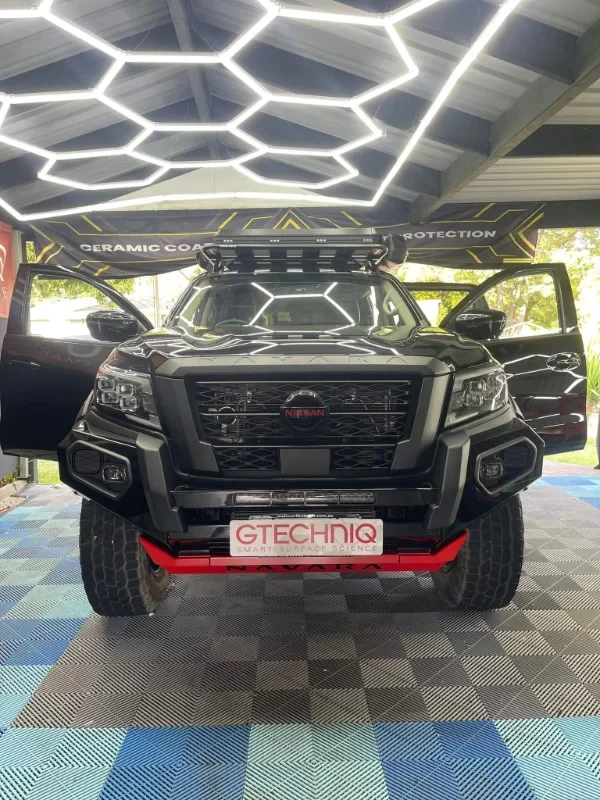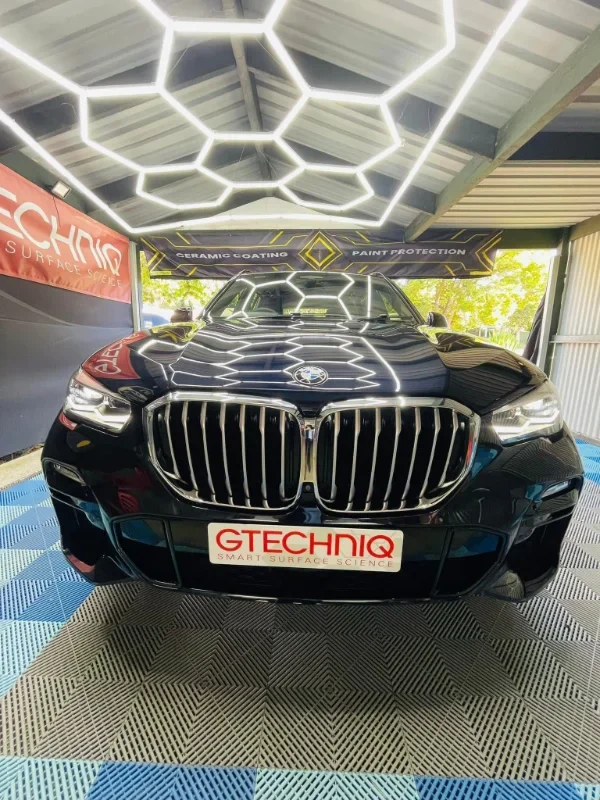Window tinting has become an essential modification for drivers seeking comfort, protection, and energy efficiency. Understanding when this enhancement becomes beneficial requires examining climate conditions, health considerations, and vehicle usage patterns. This guide explores the key indicators that suggest window tinting would improve your driving experience.
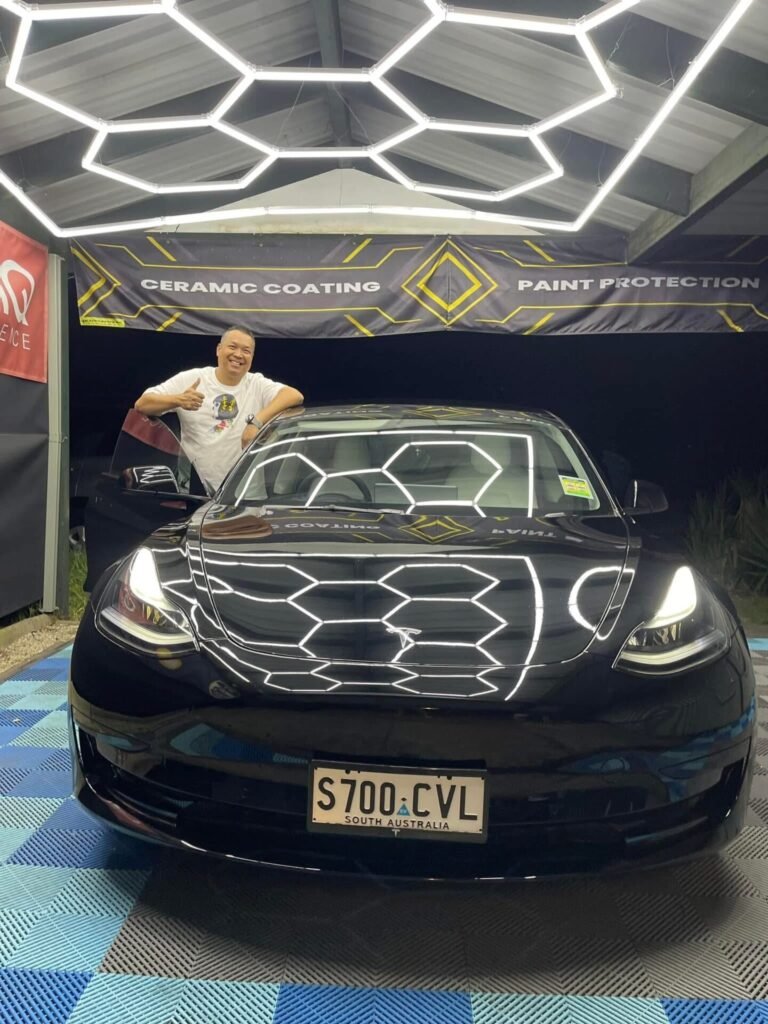
Understanding Window Tinting Technology
Film Composition
Modern window tinting films consist of multiple polyester layers treated with specialized compounds to control light transmission and heat transfer. These films incorporate different technologies including ceramic particles, carbon compounds, or dye systems to achieve specific performance characteristics.
Heat Rejection Process
Window tinting Adelaide works by controlling visible light, infrared radiation, and ultraviolet rays. Quality films can reject up to 70% of total solar energy while maintaining necessary visibility for safe driving. This selective filtering significantly reduces interior heat buildup.
Climate Factors for Window Tinting
Temperature Indicators
Regions experiencing consistent temperatures above 80°F benefit significantly from window tinting due to increased solar heat gain. Areas with daily peaks exceeding 90°F see the most dramatic comfort improvements from properly installed heat-rejecting films.
UV Exposure Levels
Ultraviolet radiation intensity varies by latitude and altitude, with higher UV levels creating greater need for protective films. Cities like Adelaide, where intense sun creates challenging conditions, see tremendous benefits from professional Window Tinting Adelaide services.
Health Benefits of Window Tinting
UV Protection
Quality window tinting blocks up to 99% of harmful UV rays, providing crucial protection against skin damage and premature aging. This protection becomes especially important for individuals spending considerable time in vehicles daily.
Heat-Related Safety
Excessive interior heat creates health risks including dehydration and heat exhaustion. Window tinting significantly reduces interior temperatures, creating safer conditions for all passengers, particularly children and elderly individuals.
Identifying Heat Problems in Vehicles
Interior Temperature Signs
If interior surfaces become too hot to touch after parking in sunlight, or if your vehicle requires extensive air conditioning to maintain comfort, window tinting can provide significant relief. Dashboard cracking and upholstery fading also indicate excessive solar heat transmission.
Cooling Issues
Air conditioning systems working continuously or struggling to maintain comfortable temperatures suggest excessive heat load that window tinting addresses. Increased fuel consumption due to constant cooling system operation indicates potential efficiency improvements through tinting.
Types of Window Tint Films
Ceramic Films
Ceramic window films represent the most advanced technology available, utilizing ceramic nanoparticles to achieve superior heat rejection without metallic content. These films provide excellent optical clarity and complete compatibility with electronic devices including phones and GPS systems.
Ceramic technology offers the highest heat rejection rates while maintaining signal transparency. Color stability and fade resistance make ceramic films ideal for long-term installations, with many offering warranties exceeding ten years.
Carbon Films
Carbon window films provide effective heat rejection and UV protection without signal interference issues. These films maintain excellent color stability and offer an attractive, non-reflective appearance that complements various vehicle styles.
Carbon technology offers balanced performance characteristics at moderate pricing, providing meaningful heat rejection while maintaining electronic device compatibility. The matte finish provides sophisticated appearance enhancement with practical benefits.
Dyed Films
Dyed window films use multiple dye layers to absorb solar energy and provide basic heat reduction and privacy benefits. These films represent the most economical tinting option while still offering meaningful protection from sun and glare.
While dyed films may fade over time and don’t offer the heat rejection performance of advanced technologies, they provide effective privacy and basic sun protection for budget-conscious consumers.
Legal Requirements and Standards
VLT Regulations
Visible Light Transmission percentages regulate minimum light passage through tinted windows, with requirements varying by jurisdiction. Front windows typically require higher VLT percentages than rear windows to maintain driver visibility.
State Laws
Window tinting regulations vary dramatically between states, with some allowing relatively dark tint while others maintain strict limitations. Professional services like KD Auto Detailing stay current with local regulations and ensure compliant installations.
Optimal Timing for Installation
Seasonal Considerations
Spring installation provides optimal timing for maximum summer benefit, allowing improved comfort during the hottest months. Winter installation offers unique advantages including reduced glare from snow reflection and better scheduling availability.
Vehicle Age
New vehicles benefit from immediate tinting to prevent UV damage from ownership start. Used vehicles showing interior wear can benefit significantly from tinting to prevent additional damage while improving comfort.
Selecting Tint Percentages
Light Transmission Levels
Different VLT percentages serve specific purposes. Higher percentages (70-50% VLT) offer UV protection with maximum visibility. Medium levels (50-35% VLT) provide balanced privacy and performance. Lower percentages (35-20% VLT) maximize privacy and heat rejection.
Practical Uses
Consider driving patterns and passenger needs when selecting percentages. Daily commuters benefit from heat rejection and glare control, while security-conscious individuals may prioritize privacy benefits over other considerations.
Professional Installation Benefits
Quality Standards
Professional installation follows established procedures ensuring optimal results and longevity. The process includes thorough surface preparation, precise cutting, and proper application techniques to eliminate bubbles and ensure uniform coverage.
Warranty Coverage
Professional installations typically include warranties covering materials and workmanship. These warranties provide protection against defects and installation issues, demonstrating installer confidence in quality and materials.
Daily Maintenance Requirements
Care Instructions
Proper maintenance extends tinting life and maintains appearance. Use ammonia-free cleaning products and soft cloths to avoid damaging film surfaces. Avoid sharp objects near tinted windows during normal use.
Cleaning Methods
Regular gentle cleaning maintains optical clarity and prevents contamination buildup. Microfiber cloths provide effective cleaning without scratching film surfaces, while avoiding abrasive materials helps maintain performance.
Common Window Tinting Myths
Visibility Facts
Many believe legal window tinting significantly impairs nighttime visibility. Properly installed tinting with appropriate VLT levels has minimal impact on night driving when regulatory standards are followed.
Performance Reality
Some misconceptions suggest minimal benefits from window tinting. Quality films provide measurable, significant benefits in heat rejection, UV protection, and comfort enhancement that justify installation consideration.
Vehicle-Specific Applications
Sedans
Sedans typically require tinting for front doors, rear doors, and rear windows, with different legal requirements for each position. Consider passenger comfort and privacy needs when selecting appropriate tint levels.
SUVs
SUVs often have larger window areas that can result in greater heat gain, making tinting particularly beneficial. The additional glass surface area means more potential for solar heat transmission without protective films.
Commercial Vehicles
Work trucks and commercial vehicles may have specific requirements related to visibility or company policies. Consider both personal comfort needs and any professional requirements when evaluating commercial vehicle tinting.
Energy Efficiency Benefits
Fuel Savings
Window tinting reduces air conditioning load during hot weather, potentially improving fuel efficiency. The energy savings from reduced cooling system operation can be substantial in hot climates where systems work continuously.
System Protection
Reduced thermal load helps extend air conditioning system life by decreasing operational stress. Less frequent system cycling and lower operating temperatures contribute to improved reliability and longevity.
Interior Protection Advantages
UV Damage Prevention
Window tinting protects interior materials from UV damage that causes fading, cracking, and deterioration. This protection helps maintain vehicle appearance and value throughout ownership.
Material Preservation
By blocking harmful rays and reducing heat, tinting extends the life of seats, dashboard components, and trim pieces. This preservation reduces replacement needs and maintains vehicle condition.
Decision-Making Guidelines
Assessment Checklist
Evaluate local climate, daily driving patterns, comfort preferences, and health considerations when deciding on window tinting. Consider both immediate benefits and long-term advantages for your specific situation.
Professional Consultation
Consulting with experienced professionals provides valuable insights into optimal solutions for individual requirements. Professional guidance ensures appropriate film selection and compliant installation.
Long-Term Value Considerations
Durability Factors
Quality films typically provide 10-15 years of effective service when properly installed and maintained. Film longevity depends on material quality, environmental conditions, and consistent maintenance practices.
Performance Expectations
Premium films maintain their performance characteristics throughout their service lives with appropriate care. Heat rejection, UV protection, and appearance benefits remain consistent over extended periods.
KD Auto Detailing Serving the Northgate Community and Beyond in Adelaide
KD Auto Detailing is dedicated to serving the diverse needs of the local community of Adelaide, including individuals residing in neighbourhoods like Northgate. With its convenient location near landmarks such as the Leopold Conrad Reserve, Cedar College Sports Centre, Northgate Playground and major intersections like Fosters Rd & Navigator Dr and Rapid Ave & Folland Ave (coordinates: -34.8550203, 138.633055), we offer window tinting services.
Get window tinting Services at Northgate Now
Navigate from Northgate to KD Auto Detailing Now
Is It Time to Tint Your Vehicle’s Windows? Here’s What to Consider
Key Reasons to Consider Window Tinting:
- Reduces harmful UVA/UVB radiation by over 99% with quality tint films
- Cuts sun glare, improving driving comfort and safety
- Protects vehicle interior from heat damage and fading
- Enhances privacy and vehicle aesthetics
Legal Tint Limits by Window Type & State (Visible Light Transmission % – VLT):
State/Territory Windscreen Tint Allowed? Front Side Windows (Max Dark) Rear Side Windows (Max Dark) Rear Window (Max Dark) ACT Top 10% only 35% 35% 35% NSW Top 10% only 35% 35% 35% NT Top 10% only 35% 15% 15% QLD Top 10% only 35% 20% 35% SA Top 10% only 35% 35% 35% TAS Top 10% only 35% 35% 35% VIC Top 10% only 35% 35% 35% WA No windscreen tint 35% 20% 20%
Additional Notes:
- Windscreen tinting limited to top 10% above wipers (except WA where none allowed)
- Tint films must comply with reflectivity limits (max 10%)
- Tinting recommended especially for drivers spending long hours in vehicles to reduce UV exposure
- Darker tint (e.g., 35% VLT) popular for balancing privacy, UV protection, and legal compliance
- Over-tinting risks fines, insurance issues, and reduced visibility
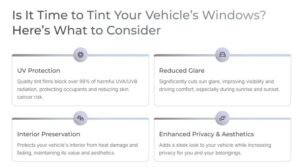
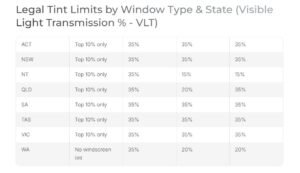
Sources: Cancer Council Australia, Tint Kits, Tint Mart, Australian State Regulations (2025)
Long-term Maintenance and Care
Window tinting provides practical benefits including heat reduction, UV protection, energy efficiency, and interior preservation when properly selected and installed. The decision depends on climate conditions, health considerations, vehicle usage, and personal preferences. Understanding local regulations ensures compliant installations that maximize benefits while meeting legal requirements.
Quality professional installation ensures optimal results and longevity, while proper maintenance extends film life and maintains performance. Consider individual needs, vehicle specifications, and local conditions when evaluating whether window tinting would enhance your driving experience and vehicle protection.
Frequently Asked Questions
What are the main signs that my vehicle would benefit from window tinting?
Consider tinting if your car becomes uncomfortably hot quickly, you experience frequent sun glare, notice interior fading, or constantly run air conditioning. These indicate excessive solar heat and UV transmission that quality films address effectively.
Which type of window tint film offers the best overall performance?
Ceramic films provide the best overall performance with superior heat rejection, UV protection, and electronic compatibility. Carbon films offer good balanced performance, while dyed films provide basic protection at lower cost.
How do I ensure my window tinting meets legal requirements?
Research your state’s VLT requirements for different windows and work with professional installers familiar with local regulations. Front windows typically require lighter tint than rear windows for legal compliance.
What maintenance is required to keep tinted windows performing well?
Use ammonia-free cleaners and soft cloths, avoid sharp objects near windows, and follow initial curing instructions. Proper care extends film life to 10-15 years while maintaining optimal performance.
When is the best time of year to install window tinting?
Spring provides maximum summer benefit, while winter offers better availability and cold-weather advantages like reduced snow glare. Any season works depending on your immediate needs and installer availability.
